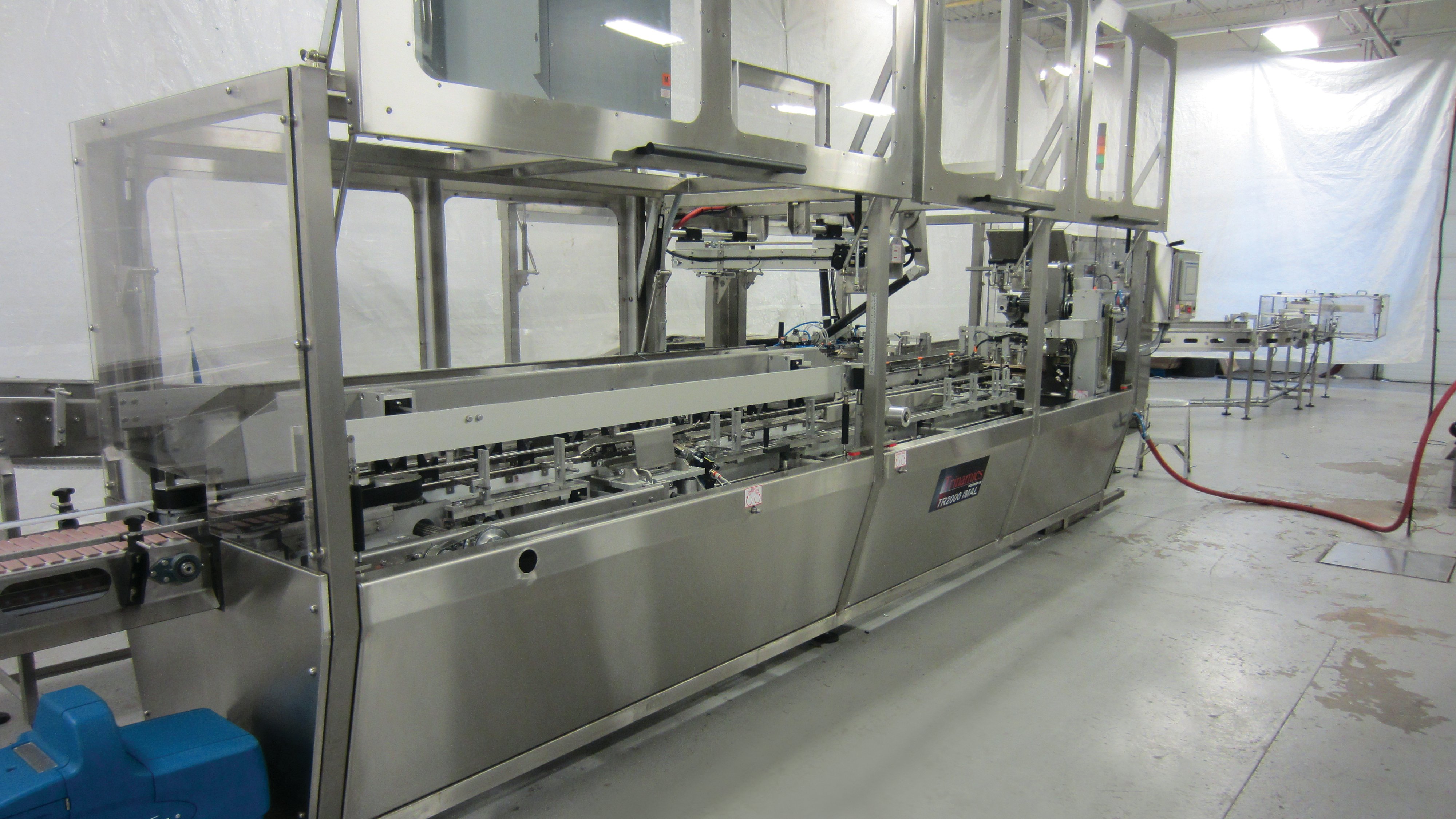Recommended For You
Production forecasting is not a perfect science. Still, successful machine builders are often called upon to develop cost-effective equipment that enables customers to meet future capacity requirements. That can be especially difficult in the food industry, where consumer demand is particularly fickle. “Part of our job at the front end of every equipment purchase is helping our customers see the value of deploying a flexible solution that can accommodate future needs,” said Barry Ryzebol, co-owner, Trinamics. “Anticipating exactly where they are ‘going to grow' is often the most difficult part of developing an appropriate solution.”
Located in Orangeville, Ontario, Trinamics produces a line-up of quality packaging machinery for food, beverage, household and personal care product manufacturers. Recently, the company was asked to develop an integrated cartoner/case packer for a leading chicken processing company. “In terms of production capacity, the customer wanted our solution to do more than keep up with their existing baggers,” Ryzebol said. “They planned to introduce some off -skid product into the packaging line – and wanted to ensure they could ramp-up overall production in the future, as well.” The Trinamics solution handles the pressed chicken product from the discharge point of two vertical form fill seal (VFFS) machines, where it is bagged, to the palletizers at the end of the line. Before entering the cartoner, metering belts separate the bagged product and conditioning hardware manipulates each bag. The bags are then deposited into the traveling buckets on the cartoner bucket conveyor. The filled buckets travel forward to the carton load station where the bags are end loaded into retail-ready cartons. Next, carton flaps are sequentially closed and sealed using melt adhesive.
In the last step, the product is conveyed to the integrated side-load case packer. Here, the cartons are packed according to a specified fl at or on-edge pack pattern, and ultimately discharged for palletizing. “There's a high percentage of motion control hardware in this application,” Ryzebol explained. “In the old days, we handled that with mechanical gearboxes and line shafts. Now, it's all servo technology, which achieves more consistent performance and reduces the number of maintenance points.” The Trinamics equipment is based on a Rockwell Automation control system featuring Allen-Bradley® Kinetix® 5500 servo drives and Kinetix VPF food-grade servo motors. The servo control includes 27 total axes – 14 for the cartoner and 13 for the case packer. All machine functionality is managed by an Allen-Bradley CompactLogix™ controller. The system also incorporates Allen-Bradley PowerFlex® 525 AC drives to control the conveyance equipment. The solution is integrated on an EtherNet/IP™ network and monitored with Allen-Bradley PanelView™ Plus 6 graphic terminals.
The Kinetix and PowerFlex drives include integrated Safe Torque-Off functionality, which can improve both machine safety and availability. Safe-off capability removes rotational power from the motor without powering down the entire machine. As a result, equipment can be brought to a stop more safely and restarted more quickly. “Safety is critical for this application,” Ryzebol said. “With the exception of a few places where we bring in or take out product, the machine is virtually 100 percent guarded. We utilize Allen-Bradley Category 3 safety interlock switches throughout the system.” For this solution, the Trinamics machine shares space with the primary processing equipment and is therefore subject to the humidity and temperature variations of a complete washdown environment. “The processing line is exposed to routine clean-up and extensive nightly sanitation procedures, which expose our equipment to high humidity levels and periodic splash,” Ryzebol said. “The food-grade motors can withstand this environment.” Besides offering higher quality, white food-grade paint, the VPF motors also feature a simplified, single cable connection to the servo drives, which speeds installation by about 50 percent. “Installation is much cleaner than it used to be,” Ryzebol said. “It's pretty much ‘plug and play'.”
In the end, Trinamics delivered a solution that met the customer's current budget and production requirements – and has an approximately 30 percent capacity buffer to meet future needs. “At Trinamics, we start with a core design concept or machine model – and then tailor it to the application at hand,” Ryzebol said. “Standardizing on a Rockwell Automation platform helps us establish consistent quality and customer expectations across the board.”
Published April 1, 2015

